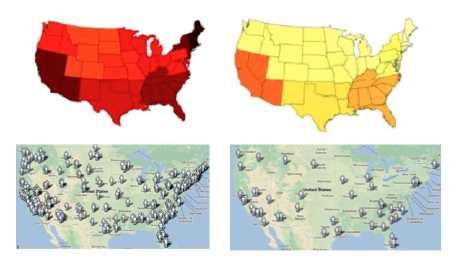An expert from Shell says that oil companies, with their deep knowledge of geophysics, are well-suited to pioneer carbon capture and storage technology.
Oil companies’ expertise in geophysics might be invaluable in addressing climate change and other civilization-scale challenges, according to Dirk Smit, vice president of exploration technology at Royal Dutch Shell.
Speaking on the sidelines of MIT Technology Review’s EmTech conference today, Smit described a future in which fossil fuels provide a smaller fraction of the world’s energy needs—not because the world will run out of them but because a range of factors, including improved technology and concerns about climate change, make alternatives to fossil fuels more competitive.
Fossil fuels will certainly not run out anytime soon. Advances in deep sea drilling and hydraulic fracturing, or “fracking,” are opening up large new fossil fuel resources, providing enough natural gas to last, theoretically, 230 years.
And while it might seem like an odd reversal for oil companies to get into the business of reducing emissions, Smit believes oil companies could play an important role. He said their expertise in geophysics and in managing extremely large-scale operations could be key to both addressing water scarcity and helping to capture and store carbon dioxide to limit climate change.
Smit’s job is to use technology to help oil companies find and extract ever more oil and gas by better understanding what happens underground. But if countries get serious about preventing climate change, much of what the oil companies discover will need to stay underground, according to a recently released report from the UN’s Intergovernmental Panel on Climate Change (see “Technology Is Moving Too Slowly to Make Climate-Change Target”).
Smit says that Shell’s efforts to understand geophysics could play an important role in such a scenario. And if it is necessary to pump carbon dioxide underground to deal with climate change, he says, no one has a better head start on knowing how to do this than oil companies. He notes that there are still big questions about carbon capture and storage, or CCS—including how long the carbon dioxide can be stored. But Shell’s experience in characterizing reservoirs could help answer those questions. “Shell doesn’t have all the answers,” he says, “but it’s not starting from scratch.”
Shell also has experience injecting large amounts of carbon dioxide underground as part of its efforts to extract more oil. And it is already developing some large-scale CCS projects (see “Can Carbon Capture Clean Up Canada’s Oil Sands?”). The scale of CCS needed to make a dent in carbon emissions would, however, need to be on the same scale as the oil and gas industry’s current operations in extracting and transporting fossil fuels.
Earlier this month in a speech for the Oil & Money Conference in London, Shell’s CEO Peter Voser pointed to CCS—along with biofuels and natural gas for transportation—as a promising area for Shell. He said, “I’m not suggesting these opportunities will be easy, but they could be the bedrock of our future competitiveness.”
http://www.technologyreview.com/news/519436/shell-exec-says-oil-companies-might-become-carbon-capture-ones/

